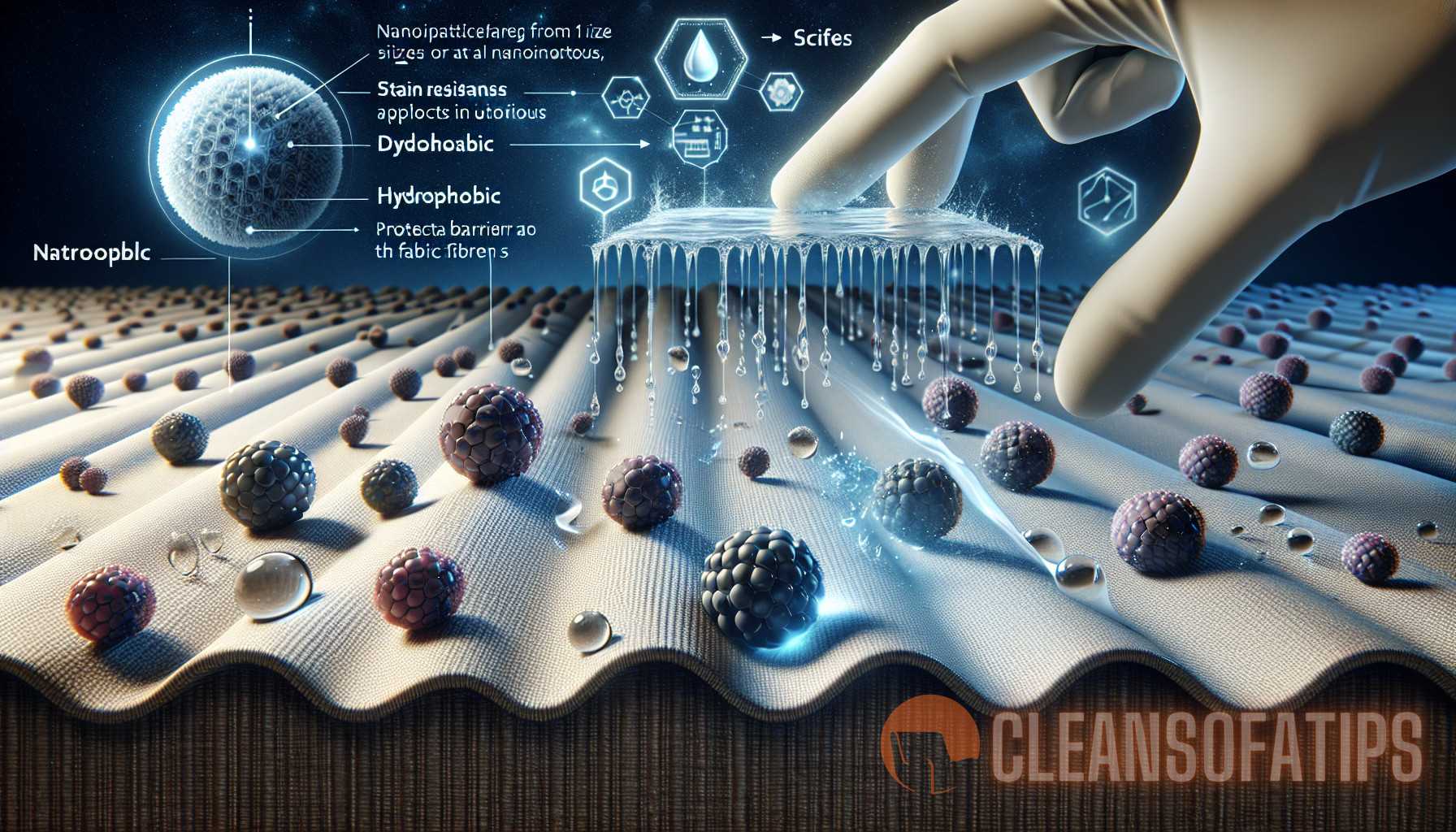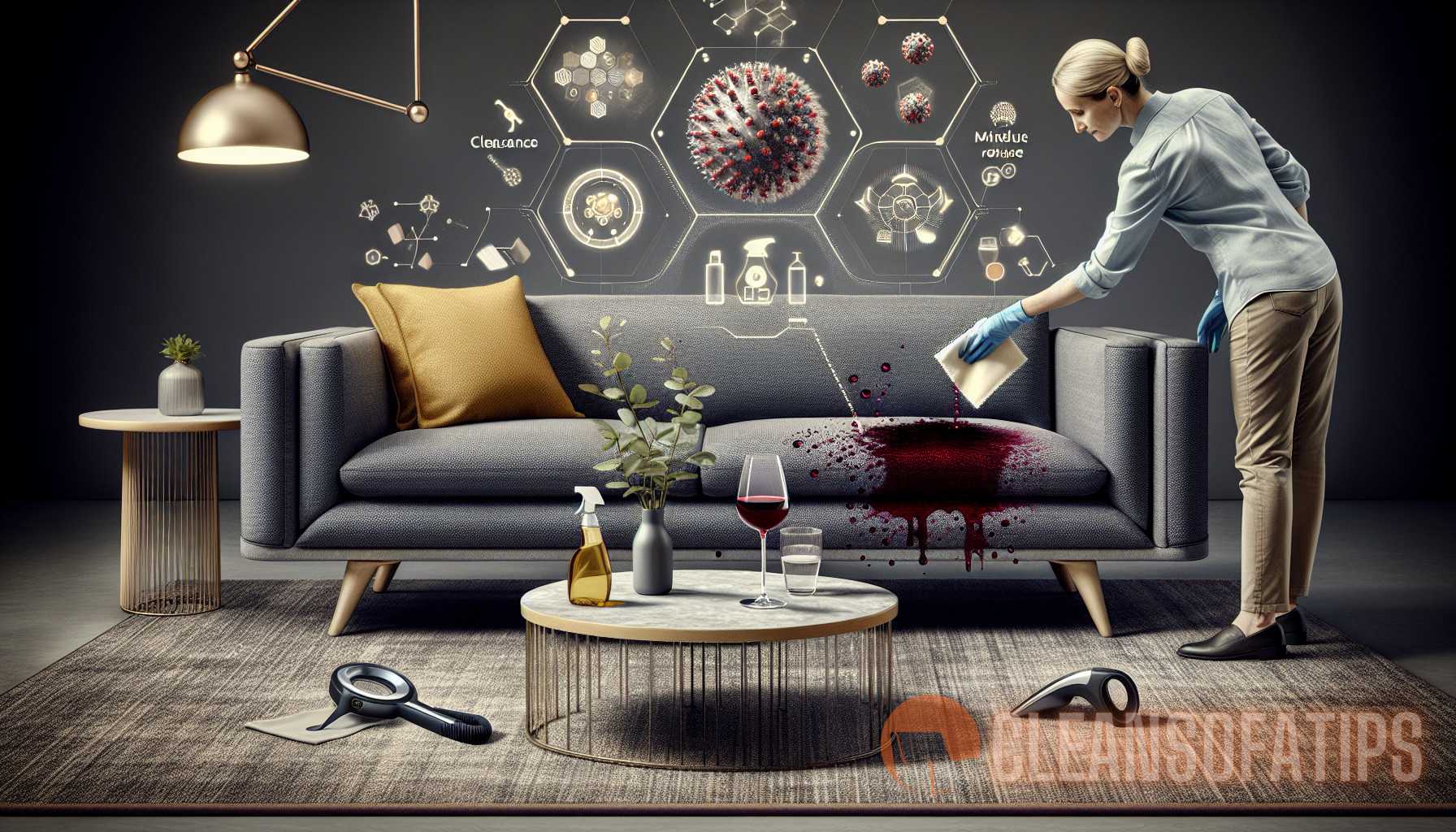Table of Contents
- Introduction
- The Importance of Stain Resistance in Upholstery
- The Basics of Nanotechnology
- How Nanotechnology Works in Stain-Resistant Upholstery
- The Benefits of Stain-Resistant Upholstery
- The Science Behind Stain-Resistant Upholstery
- Types of Stain-Resistant Fabrics
- Caring for Stain-Resistant Upholstery
- Common Misconceptions about Stain-Resistant Upholstery
- Conclusion
1. Introduction
When it comes to upholstery, one of the biggest concerns for homeowners is keeping their furniture free from stains. Whether it’s a spilled glass of wine, a wayward pet, or simply everyday wear and tear, stains can quickly ruin the appearance of your furniture. However, thanks to advances in nanotechnology, stain-resistant upholstery has become a game-changer in the world of fabric care. In this guide, we will unlock the secrets of stain resistance by exploring how nanotechnology is harnessed to create long-lasting upholstery solutions. From the science behind stain resistance to the benefits and types of stain-resistant fabrics, this guide will provide you with all the information you need to know to keep your upholstery looking its best for years to come.
2. The Importance of Stain Resistance in Upholstery
Stain resistance is a crucial feature to consider when choosing upholstery for your home. Upholstered furniture is prone to stains and spills, especially in high-traffic areas such as living rooms and dining rooms. Without stain resistance, even a small spill can leave a permanent mark on your furniture, affecting both its appearance and longevity. Stains not only make your furniture look dirty and unkempt, but they can also lead to the growth of bacteria and mold, posing a potential health risk. Stain-resistant upholstery provides a protective barrier against spills and stains, making it easier to clean and maintain your furniture.
3. The Basics of Nanotechnology
Nanotechnology is a rapidly growing field that involves manipulating matter on an atomic and molecular scale. At this scale, materials and substances exhibit unique properties and behaviors that are different from their bulk counterparts. By harnessing these properties, scientists are able to create materials and products with enhanced performance and functionality. In the context of stain-resistant upholstery, nanotechnology is used to create fabrics that repel liquids, prevent staining, and resist the growth of bacteria and mold.
4. How Nanotechnology Works in Stain-Resistant Upholstery

Stain-resistant upholstery incorporates nanotechnology through the use of nanoparticles, which are particles that range in size from 1 to 100 nanometers. These nanoparticles are embedded into the fabric fibers or applied as a coating to create a protective barrier. The nanoparticles form a hydrophobic (water-repellent) layer on the fabric, preventing liquids from permeating the fibers and causing stains. Additionally, the nanoparticles can have antimicrobial properties, inhibiting the growth of bacteria and mold. This combination of water-repellency and antimicrobial action makes stain-resistant upholstery highly effective in preserving the appearance and cleanliness of furniture.
5. The Benefits of Stain-Resistant Upholstery
Stain-resistant upholstery offers several benefits that make it a popular choice among homeowners. These benefits include:
- Easy cleaning: Stain-resistant fabrics are easy to clean, as spills can be quickly wiped away without leaving a lasting mark.
- Longevity: Stain-resistant upholstery is more durable and resistant to everyday wear and tear, ensuring that your furniture maintains its appearance for a longer period of time.
- Hygiene: The antimicrobial properties of stain-resistant fabrics prevent the growth of bacteria and mold, reducing the risk of allergies and respiratory problems.
- Peace of mind: With stain-resistant upholstery, you can relax and enjoy your furniture without constantly worrying about accidental spills and stains.
6. The Science Behind Stain-Resistant Upholstery
Stain-resistant upholstery is backed by extensive scientific research and development. The properties of the nanoparticles used in stain-resistant fabrics are carefully engineered to provide optimal stain resistance and durability. These nanoparticles are designed to be highly water-repellent, so that liquids simply roll off the fabric without soaking in. In addition, the antimicrobial properties of the nanoparticles help to maintain a hygienic environment by inhibiting the growth of bacteria and mold. The scientific principles behind stain-resistant upholstery ensure that consumers can rely on the performance and effectiveness of these products.
7. Types of Stain-Resistant Fabrics
There are several types of stain-resistant fabrics available on the market, each with its own unique set of characteristics and benefits. Some popular options include:
- Microfiber: Microfiber is a synthetic fabric made from extremely fine fibers. It is known for its high stain resistance, durability, and softness. Microfiber upholstery is easy to clean and maintain, making it a popular choice for households with children and pets.
- Acrylic: Acrylic upholstery is known for its excellent stain resistance and colorfastness. It is a versatile fabric that can mimic the look and feel of natural fibers such as wool or cotton.
- Polyester: Polyester upholstery is highly resistant to staining and fading. It is a durable fabric that is easy to clean and maintain.
- Nylon: Nylon upholstery is known for its outstanding stain resistance and durability. It is a versatile fabric that is resistant to wear and tear, making it suitable for high-traffic areas.
8. Caring for Stain-Resistant Upholstery
While stain-resistant upholstery is designed to be easy to clean and maintain, it still requires proper care to ensure its longevity. Here are some important tips for caring for stain-resistant upholstery:
- Regular cleaning: Vacuum your upholstery regularly to remove loose dirt and dust. This will prevent particles from settling into the fabric and potentially causing stains.
- Immediate action: Act quickly if a spill occurs. Blot the spill gently with a clean cloth or paper towel to absorb as much of the liquid as possible. Avoid rubbing the fabric, as this can spread the stain.
- Use appropriate cleaning products: When cleaning your stain-resistant upholstery, use mild, non-abrasive cleaning products that are specifically designed for the fabric type. Avoid using bleach or harsh chemicals, as these can damage the fabric.
- Follow manufacturer’s instructions: Always refer to the care instructions provided by the manufacturer of your upholstery. These instructions will give you specific guidance on how to clean and maintain your stain-resistant fabric.

By following these care tips, you can ensure that your stain-resistant upholstery remains in excellent condition for years to come.
9. Common Misconceptions about Stain-Resistant Upholstery
There are a few common misconceptions about stain-resistant upholstery that are important to address:
- Stain-proof: While stain-resistant upholstery is highly effective at repelling liquids and preventing staining, it is not completely stain-proof. In some cases, certain substances or spills may still cause a stain if not promptly cleaned.
- Permanent protection: The stain resistance of upholstery can diminish over time due to regular wear and tear. It is important to follow proper care and maintenance guidelines to ensure ongoing protection.
- Eliminates the need for cleaning: While stain-resistant upholstery makes cleaning spills easier, it does not eliminate the need for regular cleaning and maintenance. Regular vacuuming and cleaning are still necessary to keep your upholstery looking its best.
Understanding these misconceptions will help you have realistic expectations about the performance and care requirements of stain-resistant upholstery.
10. Conclusion
In conclusion, stain-resistant upholstery is a game-changer in the world of fabric care. Through the use of nanotechnology, fabrics can now repel liquids, prevent staining, and resist the growth of bacteria and mold. Stain-resistant upholstery offers several benefits, including easy cleaning, increased longevity, improved hygiene, and peace of mind. By understanding the science behind stain resistance and choosing the right fabric for your needs, you can enjoy furniture that looks great and is easy to maintain. Remember to follow proper care and maintenance guidelines to ensure the long-lasting performance of your stain-resistant upholstery. With the secrets of stain resistance unlocked, you can confidently invest in upholstery that will stand the test of time.
Internal Links:
For more information on caring for stain-resistant upholstery, check out our article on EcoCare Fabric: The Ultimate Guide to Caring for Stain-Resistant Upholstery.
Learn about groundbreaking fiber absorption research in our article on Enhancing Fabric Upholstery Lifespan with Fiber Absorption Research: A Comprehensive Guide.
External Link:
For more information on nanotechnology, check out the Wikipedia page on nanotechnology.


